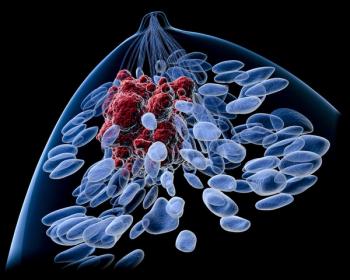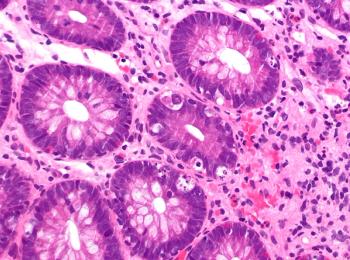
Ovarian Function Suppression May Benefit Select Breast Cancer Populations
Patients with HR-positive, HER2-positive breast cancer and high-risk features may derive benefit from ovarian function suppression plus endocrine therapy.
In a conversation with CancerNetwork® at the
In this exploratory analysis, Ahn, from the Department of Surgery, Gangnam Severance Hospital, Yonsei University College of Medicine, Seoul, Republic of Korea, evaluated whether the addition of ovarian function suppression (OFS) to endocrine therapy demonstrated a benefit in patients with HER2-positive, hormone receptor (HR)–positive breast cancer. An assessment of data from the HERA trial showed that long-term survival outcomes significantly improved among premenopausal patients who received OFS in combination with endocrine therapy.
With a median follow-up of 11 years, the 10-year disease-free survival (DFS) rate was 59.6% with tamoxifen alone vs 70.9% in patients who received endocrine therapy plus OFS (HR, 0.68; 95% CI, 0.53-0.88). Additionally, the overall survival rates at 10 years were 74.0% vs 84.7% in each respective group (HR, 0.64; 95% CI, 0.46-0.89).
Regarding potential toxicity, Ahn stated that the addition of OFS may be difficult to administer to patients who have already been treated with prior lines of chemotherapy and anti-HER2 agents. Overall, he said that OFS may elicit improvements in survival among selected patients in this population, particularly those with high-risk features.
Transcript:
For premenopausal, young [patients with] HR-positive, HER2-positive breast cancer, they need ovarian function suppression in conjunction with endocrine therapy, especially if the patient has high-stage [disease] and some high-risk features. In that case, the patient needs ovarian function suppression as a part of endocrine therapy.
[Ovarian function suppression can be] very tough and hard for the patient because they already underwent a long duration of chemotherapy and anti-HER2 therapy, and then escalating endocrine therapy may have some [toxicity]. For some of the patients with high-risk [disease], the OFS can bring better survival outcomes. Considering toxicity and patient adherence, we can give some OFS to selected patients.
Reference
Moon S, Bae SJ, Kook Y, et al. 233MO: Ovarian function suppression in HR-positive, HER2-positive breast cancer: An exploratory analysis from the HERA trial. Ann Oncol. 2024;35(suppl 2):S309-348. doi:10.1016/annonc/annonc1577
Newsletter
Stay up to date on recent advances in the multidisciplinary approach to cancer.

















































































